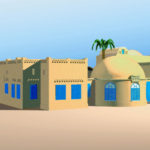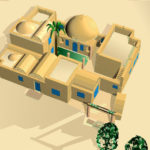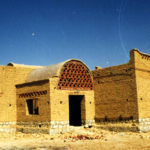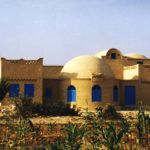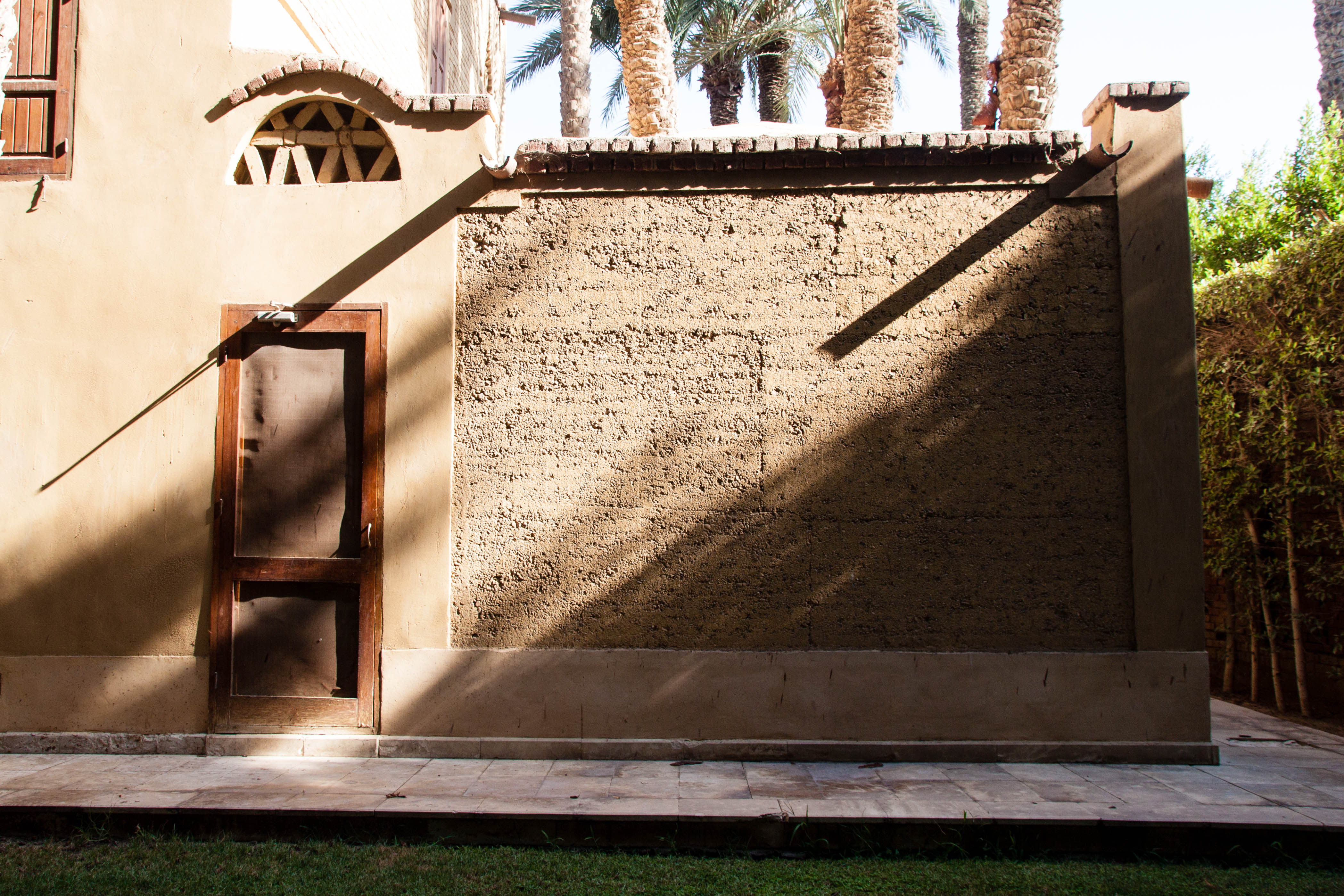- Location: Lake Qarun, Fayoum Governorate, Egypt.
- Building Area: 300 square meters.
- Building materials: Clay and natural stones.
- Building construction: Bearing walls, roofing by domes and vaults.
- Background: Going back to the use of the natural building materials, it’s not a fashion, but a necessity. Nowadays, one sack of cement in Egypt cost LE 15 ( 4.4 $ ). The daily salary of a simple worker is 8 pounds/day ( 2.3 $ ). So we can imagine how many days, these people need to work to build their own houses. Not only because of the economical aspects, but also because of the climate conditions in the Oasis of Fayoum (the temperature this year in summer reached 42º).
The Free Dome Project is an example of the revival of the traditional way of building. In the summer of 1997, a teacher and his family wanted to build a small ecological farm by Qarun Lake. They asked me to take care of their project.
Architecture Interpretation:
As a son of an Egyptian farmer born in a small village in Upper Egypt, I had the opportunity during my childhood to walk in the old parts of our village fascinated with its narrow streets and lanes. Usually, these narrow streets and lanes would lead to the small square where all the people gather. I was also fascinated with the court-yard in our houses in the village. When I finished the design and construction of this Project and while I was sitting in the court-yard, I discovered that I applied exactly what I admired and loved years ago. The court-yard is the small square of the village and the corridors are the narrow streets and lanes. So, when I stroll in the house, I feel as if I’m still in the old part of my village in Upper Egypt.
The main concepts applied in the construction of the project:
- Using the natural building materials in the area (clay and Tafla bricks).
- Integration of the inner-court system.
- Covering the roofs with domes and vaults.
- Demonstration of an example of 6.25m dome, built by the clay bricks.
- Practical training of the local masonry for the improved method of building a large dome.




